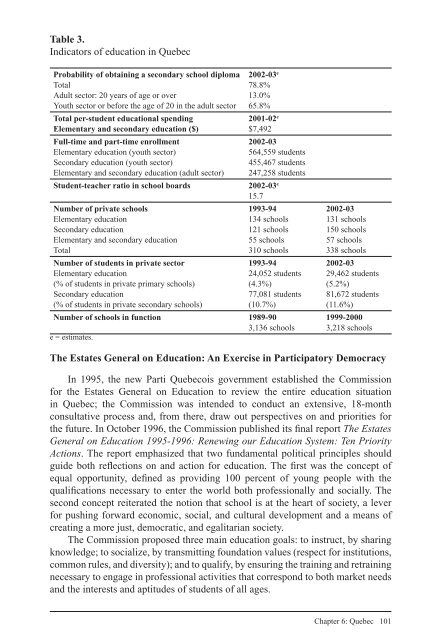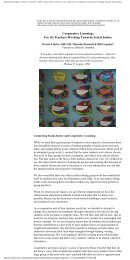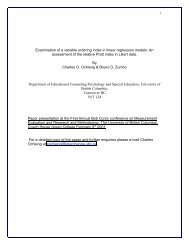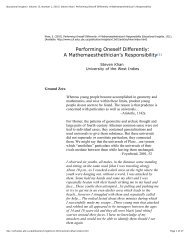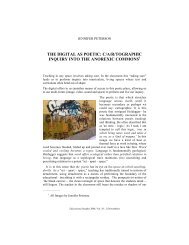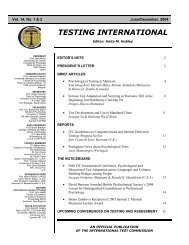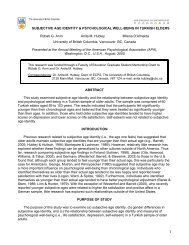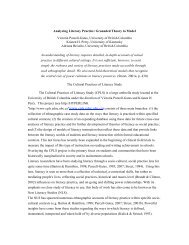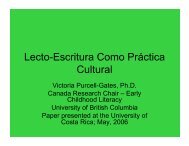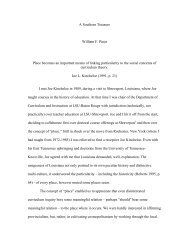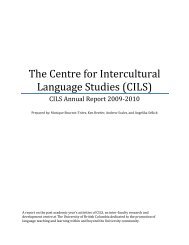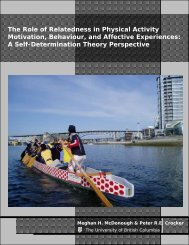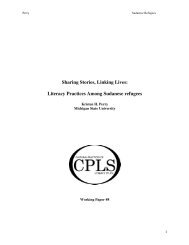The evolution of professionalism - Centre for Policy Studies in ...
The evolution of professionalism - Centre for Policy Studies in ...
The evolution of professionalism - Centre for Policy Studies in ...
Create successful ePaper yourself
Turn your PDF publications into a flip-book with our unique Google optimized e-Paper software.
Table 3.<br />
Indicators <strong>of</strong> education <strong>in</strong> Quebec<br />
Probability <strong>of</strong> obta<strong>in</strong><strong>in</strong>g a secondary school diploma<br />
Total<br />
Adult sector: 20 years <strong>of</strong> age or over<br />
Youth sector or be<strong>for</strong>e the age <strong>of</strong> 20 <strong>in</strong> the adult sector<br />
Total per-student educational spend<strong>in</strong>g<br />
Elementary and secondary education ($)<br />
Full-time and part-time enrollment<br />
Elementary education (youth sector)<br />
Secondary education (youth sector)<br />
Elementary and secondary education (adult sector)<br />
2002-03 e<br />
78.8%<br />
13.0%<br />
65.8%<br />
2001-02 e<br />
$7,492<br />
2002-03<br />
564,559 students<br />
455,467 students<br />
247,258 students<br />
Student-teacher ratio <strong>in</strong> school boards 2002-03e 15.7<br />
Number <strong>of</strong> private schools<br />
1993-94<br />
Elementary education<br />
134 schools<br />
Secondary education<br />
121 schools<br />
Elementary and secondary education<br />
55 schools<br />
Total<br />
310 schools<br />
Number <strong>of</strong> students <strong>in</strong> private sector<br />
1993-94<br />
Elementary education<br />
24,052 students<br />
(% <strong>of</strong> students <strong>in</strong> private primary schools)<br />
(4.3%)<br />
Secondary education<br />
77,081 students<br />
(% <strong>of</strong> students <strong>in</strong> private secondary schools)<br />
(10.7%)<br />
Number <strong>of</strong> schools <strong>in</strong> function<br />
e = estimates.<br />
1989-90<br />
3,136 schools<br />
2002-03<br />
131 schools<br />
150 schools<br />
57 schools<br />
338 schools<br />
2002-03<br />
29,462 students<br />
(5.2%)<br />
81,672 students<br />
(11.6%)<br />
1999-2000<br />
3,218 schools<br />
<strong>The</strong> Estates General on Education: An Exercise <strong>in</strong> Participatory Democracy<br />
In 1995, the new Parti Quebecois government established the Commission<br />
<strong>for</strong> the Estates General on Education to review the entire education situation<br />
<strong>in</strong> Quebec; the Commission was <strong>in</strong>tended to conduct an extensive, 18-month<br />
consultative process and, from there, draw out perspectives on and priorities <strong>for</strong><br />
the future. In October 1996, the Commission published its fi nal report <strong>The</strong> Estates<br />
General on Education 1995-1996: Renew<strong>in</strong>g our Education System: Ten Priority<br />
Actions. <strong>The</strong> report emphasized that two fundamental political pr<strong>in</strong>ciples should<br />
guide both refl ections on and action <strong>for</strong> education. <strong>The</strong> fi rst was the concept <strong>of</strong><br />
equal opportunity, defi ned as provid<strong>in</strong>g 100 percent <strong>of</strong> young people with the<br />
qualifi cations necessary to enter the world both pr<strong>of</strong>essionally and socially. <strong>The</strong><br />
second concept reiterated the notion that school is at the heart <strong>of</strong> society, a lever<br />
<strong>for</strong> push<strong>in</strong>g <strong>for</strong>ward economic, social, and cultural development and a means <strong>of</strong><br />
creat<strong>in</strong>g a more just, democratic, and egalitarian society.<br />
<strong>The</strong> Commission proposed three ma<strong>in</strong> education goals: to <strong>in</strong>struct, by shar<strong>in</strong>g<br />
knowledge; to socialize, by transmitt<strong>in</strong>g foundation values (respect <strong>for</strong> <strong>in</strong>stitutions,<br />
common rules, and diversity); and to qualify, by ensur<strong>in</strong>g the tra<strong>in</strong><strong>in</strong>g and retra<strong>in</strong><strong>in</strong>g<br />
necessary to engage <strong>in</strong> pr<strong>of</strong>essional activities that correspond to both market needs<br />
and the <strong>in</strong>terests and aptitudes <strong>of</strong> students <strong>of</strong> all ages.<br />
Chapter 6: Quebec 101


